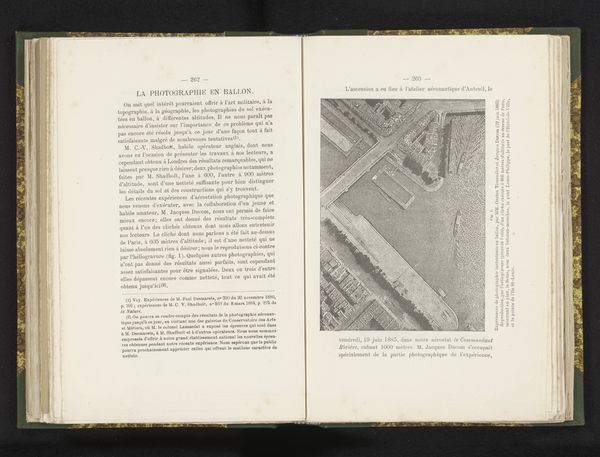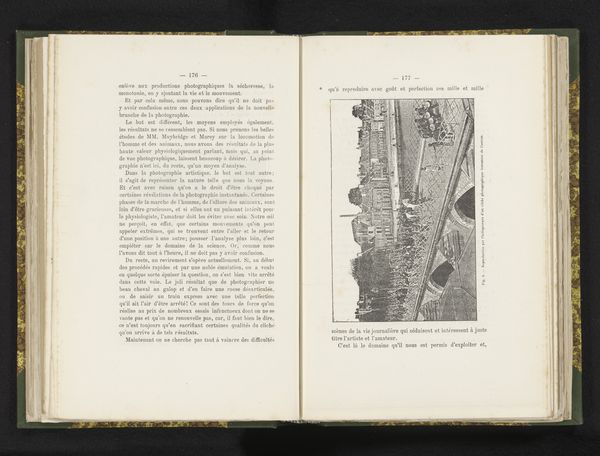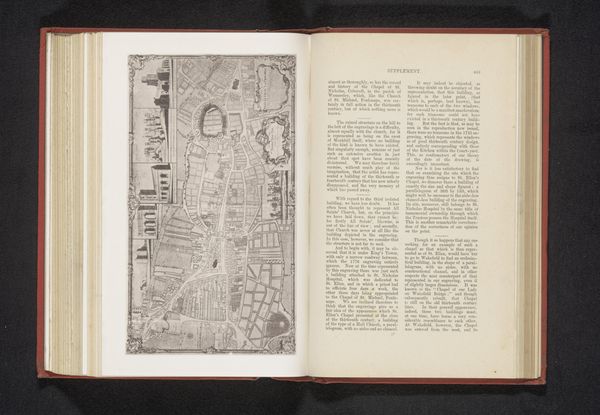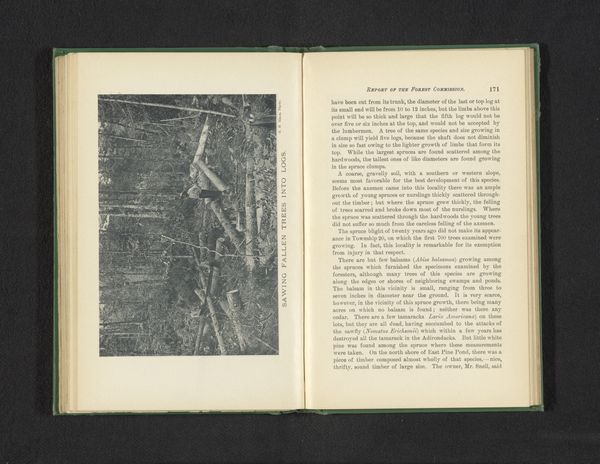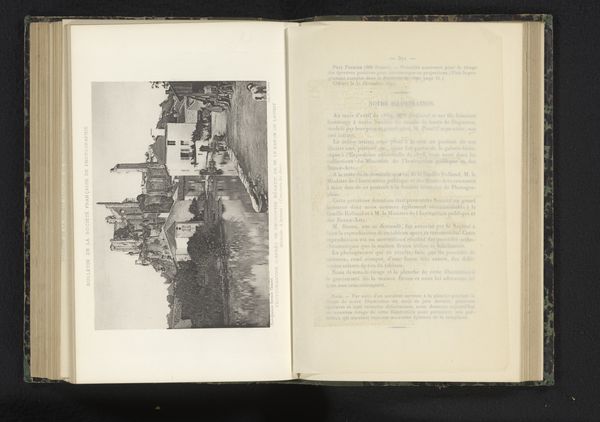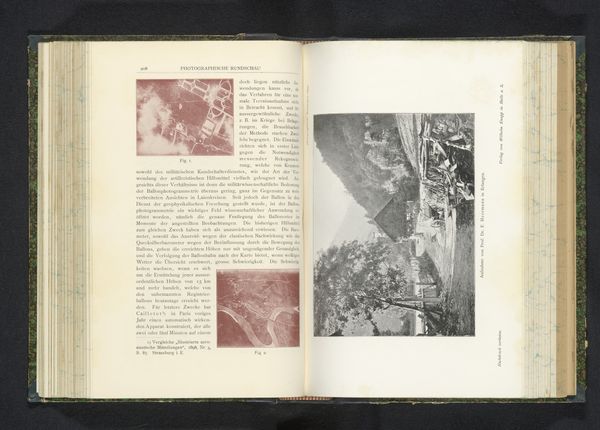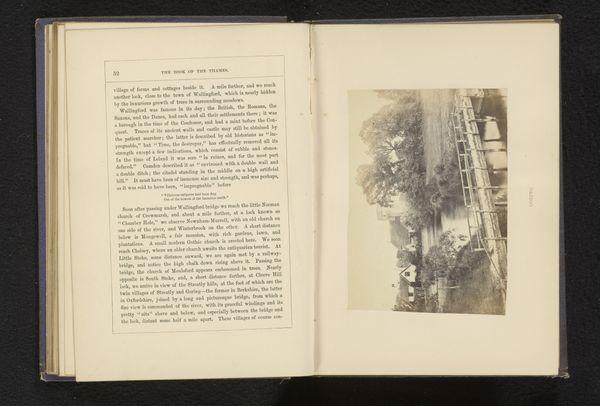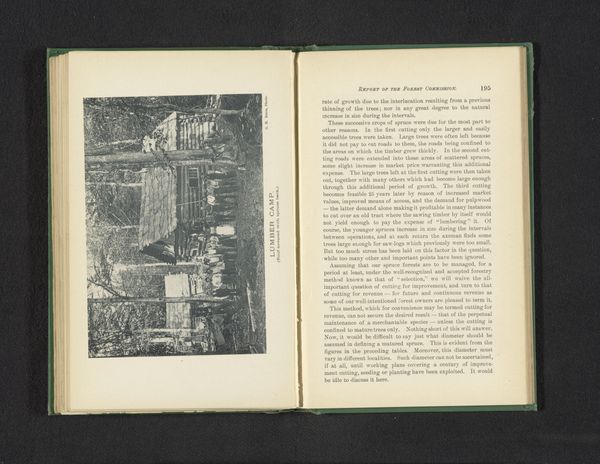
#
aged paper
#
homemade paper
#
paperlike
#
thick font
#
publication mockup
#
script guideline
#
handwritten font
#
letter paper
#
paper medium
#
historical font
Dimensions: height 101 mm, width 145 mm
Copyright: Rijks Museum: Open Domain
Curator: The object before us is a bound volume, likely dating from around 1886-1887, containing, among other texts, an aerial photograph titled "Luchtfoto van de buurt rond het Panthéon, Parijs"—an aerial view of the neighborhood around the Panthéon in Paris. Editor: It has a certain ghostly quality. All the little blocks that must be buildings are like husks viewed from above. And the page is so sepia-toned that the image looks like a dream or memory of a past era. Curator: Observe how the photograph, contained within this aged paper, presents a unique perspective, a novel way of seeing the city's architectural layout. This wasn’t possible before advancements in both photography and, presumably, aerial apparatus like balloons. We are positioned in the realm of semiotics of perspective. Editor: Right, consider the material production here: someone physically had to be in the air, in a balloon maybe, using early photographic techniques. The paper, likely handmade, bears witness to the labor involved, from producing the medium to developing the image. Think of the photographer and the production team—what labor dynamics were at play? Curator: We shouldn't lose sight of the deliberate compositional choices as well. Note how the lines converge, directing our gaze to specific focal points and revealing structural hierarchies in Parisian urbanism of the time. The Pantheon dominates, acting as a symbolic anchor in the urban tapestry. Editor: Symbolism exists materially, though. The photographic print is a reproducible object. So the work, in the context of printing and circulating such an image, suggests changing relationships with land, ownership, and knowledge. How does the proliferation of such images influence the real-world layout of the city? Curator: Fair enough, though my view focuses on how it operates pictorially; as a system of marks implying forms and the relationship among the forms to create an image which itself points to broader historical ideas about art's possibilities. Editor: Well, looking at the texture of this old paper and at this fascinating, faint record of Paris in print, reminds us of all the people it took to capture and preserve this unique historical perspective, and it helps us grasp both the abstract and concrete elements of their labor.
Comments
No comments
Be the first to comment and join the conversation on the ultimate creative platform.
